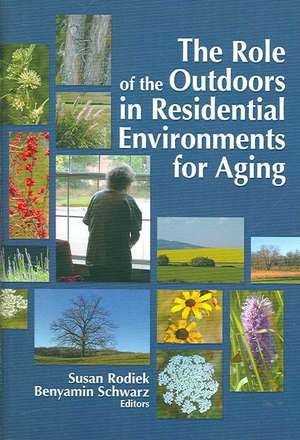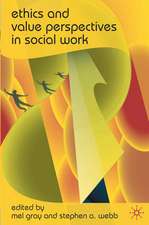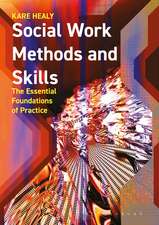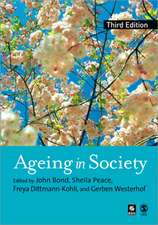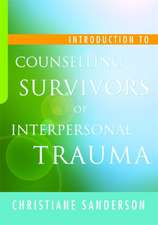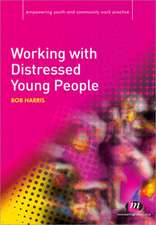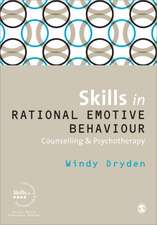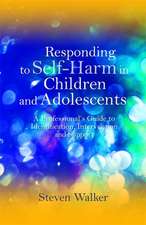The Role of the Outdoors in Residential Environments for Aging
Editat de Susan Rodiek, Benyamin Schwarzen Limba Engleză Hardback – 11 sep 2006
The Role of the Outdoors in Residential Environments for Aging presents new insights on the positive role nature and the outdoors can play in the lives of older adults, whether they live in the community, in an assisted-living environment, or in a skilled nursing facility. Current research suggests that increased contact and activity levels with the outdoors can be an important therapeutic resource for the elderly, with significant mental and physical health benefits. This unique book examines how to make the most of outdoor spaces in residential settings, exploring attitudes and patterns of use, the effect of plants, the physical environment, and health-related outcomes from contact with nature and enhanced physical activity.
The famous landscape architect Luis Barragan once said, “A garden must combine the poetic and the mysterious with serenity and joy.” The outdoors is a highly desired and potentially valuable resource for older people, making it essential for design practitioners, care providers, policy planners, and consumer advocates to target specific ways of planning communities and long-term care facilities, as well as activity programs, to maximize the use of outdoor spaces in residential settings. The benefits are many: increased well-being for residents, improved market appeal and stabilized occupancy levels for long-term care providers, increased market share for design practitioners, and a better understanding of this under-researched issue by academics. The book’s contributors provide perspectives from a variety of disciplines, including architecture and landscape architecture, gerontology, environmental psychology, and horticulture therapy.
The Role of the Outdoors in Residential Environments for Aging includes:
- interviews with residents living in three different long-term care facilities about the significance of outdoor green spaces in their environment
- reasons for underused spaces in housing projects and recommendations for site redesigns
- the features of outdoor environments that attract—and deter—usage
- specific recommendations for older adults of a particular culture
- the reasons older people engage in indoor and outdoor physical activites
- an environmental support model
- the effects of viewing natural landscapes on the blood pressures and heart rates of elderly women
- restorative experiences in natural and built environments
- design features, outdoor amenities, and green elements
- and much more
for long-term care providers, design practitioners, academics, and anyone else who provides mental and physical health care to older adults.
| Toate formatele și edițiile | Preț | Express |
|---|---|---|
| Paperback (1) | 360.13 lei 6-8 săpt. | |
| Taylor & Francis – 22 aug 2006 | 360.13 lei 6-8 săpt. | |
| Hardback (1) | 1046.82 lei 6-8 săpt. | |
| Taylor & Francis – 11 sep 2006 | 1046.82 lei 6-8 săpt. |
Preț: 1046.82 lei
Preț vechi: 1580.99 lei
-34% Nou
Puncte Express: 1570
Preț estimativ în valută:
200.48€ • 206.56$ • 167.94£
200.48€ • 206.56$ • 167.94£
Carte tipărită la comandă
Livrare economică 24 februarie-10 martie
Preluare comenzi: 021 569.72.76
Specificații
ISBN-13: 9780789032430
ISBN-10: 0789032430
Pagini: 286
Dimensiuni: 156 x 216 x 25 mm
Greutate: 0.69 kg
Ediția:1
Editura: Taylor & Francis
Colecția Routledge
Locul publicării:Oxford, United Kingdom
ISBN-10: 0789032430
Pagini: 286
Dimensiuni: 156 x 216 x 25 mm
Greutate: 0.69 kg
Ediția:1
Editura: Taylor & Francis
Colecția Routledge
Locul publicării:Oxford, United Kingdom
Cuprins
- About the Contributors
- Foreword
- Introduction: The Outdoors as a Multifaceted Resource for Older Adults (Susan Rodiek and Benyamin Schwarz)
- Nearby Nature and Long-Term Care Facility Residents: Benefits and Design Recommendations (Anne R. Kearney and Daniel Winterbottom)
- As Great as All Outdoors: A Study of Outdoor Spaces as a Neglected Resource for Nursing Home Residents (Lois J. Cutler and Rosalie A. Kane)
- Outdoor Environments at Three Nursing Homes: Focus Group Interviews with Staff (Anna Bengtsson and Gunilla Carlsson)
- The Role of Design in Inhibiting or Promoting Use of Common Open Space: The Case of Redwood Gardens, Berkeley, CA (Galen Cranz and Charlene Young)
- Resident Perceptions of Physical Environment Features that Influence Outdoor Usage at Assisted Living Facilities (Susan Rodiek)
- Accommodating Culturally Meaningful Activities in Outdoor Settings for Older Adults (Susana Martins Alves, Gowri Betrabet Gulwadi, and Uriel Cohen)
- Presence and Visibility of Outdoor and Indoor Physical Activity Features and Participation in Physical Activity Among Older Adults in Retirement Communities (Anjali Joseph, Craig Zimring, Lauren Harris-Kojetin, and Kristen Kiefer)
- Environmental Support for Outdoor Activities and Older People’s Quality of Life (Takemi Sugiyama and Catharine Ward Thompson)
- The Effects of Viewing a Landscape on Physiological Health of Elderly Women (Joyce W. Tang and Robert D. Brown)
- Restorative Environments in Later Life: An Approach to Well-Being from the Perspective of Environmental Psychology (Massimiliano Scopelliti and Maria Vittoria Giuliani)
- Measures of Restoration in Geriatric Care Residences: The Influence of Nature on Elderly People’s Power of Concentration, Blood Pressure, and Pulse Rate (Johan Ottosson and Patrik Grahn)
- Index
- Reference Notes Included
Descriere
The Role of the Outdoors in Residential Environments for Aging presents new insights on the positive role nature and the outdoors can play in the lives of older adults, whether they live in the community, in an assisted-living environment, or in a skilled nursing facility. Current research suggests that increased contact and activity levels with the outdoors can be an important therapeutic resource for the elderly, with significant mental and physical health benefits. This unique book examines how to make the most of outdoor spaces in residential settings, exploring attitudes and patterns of use, the effect of plants, the physical environment, and health-related outcomes from contact with nature and enhanced physical activity.
